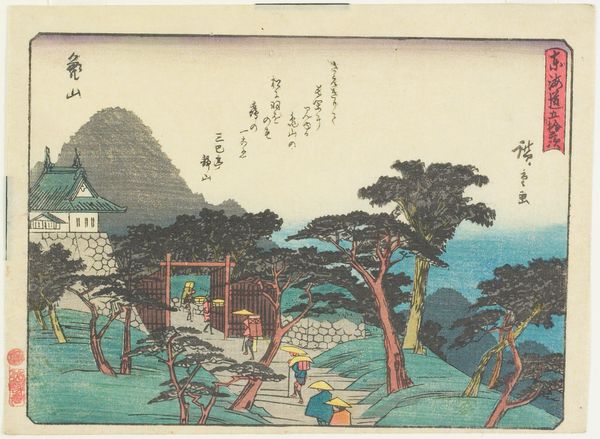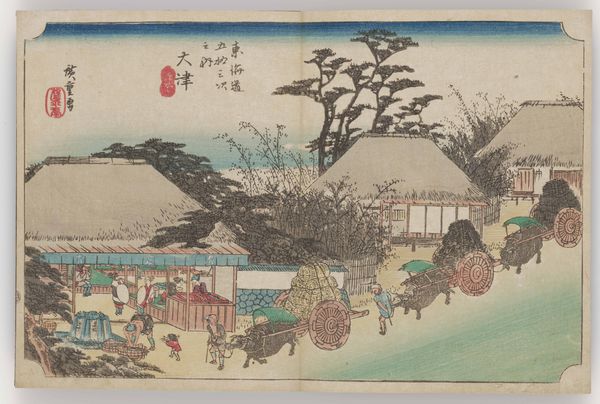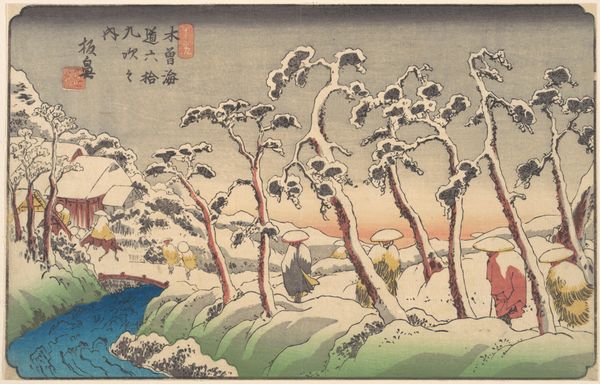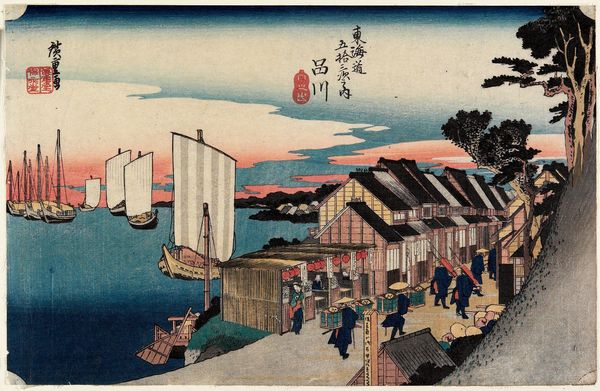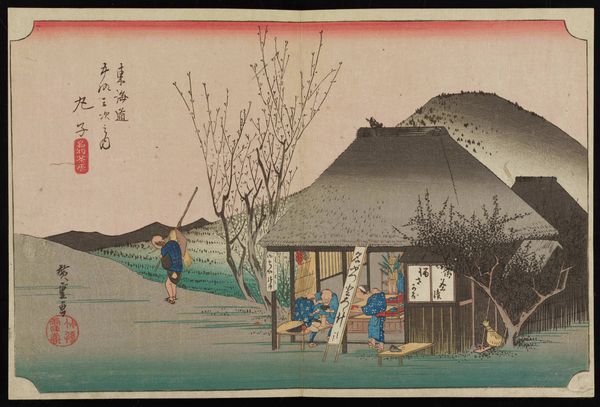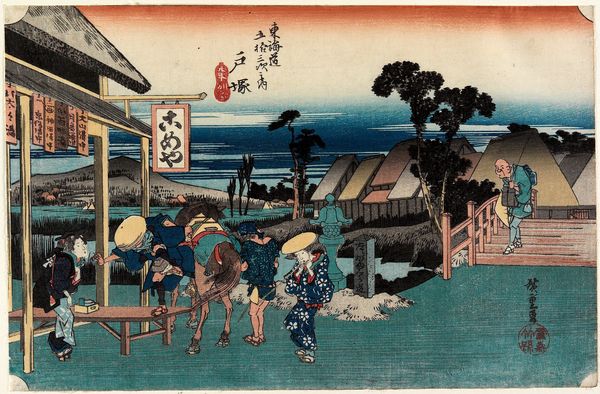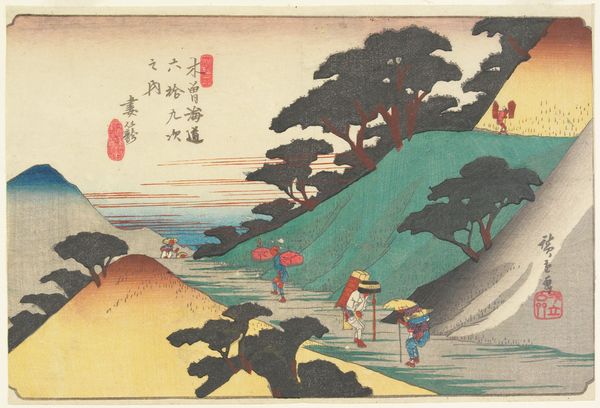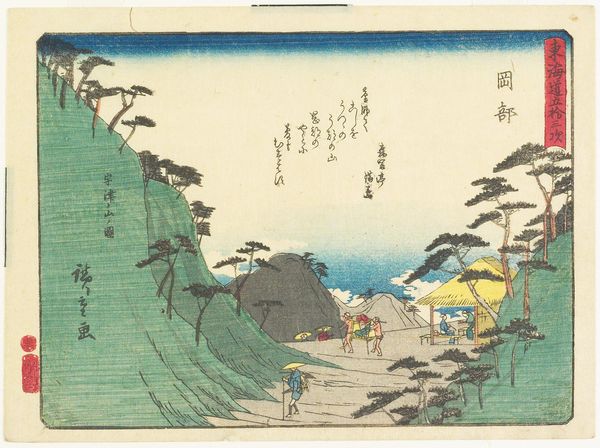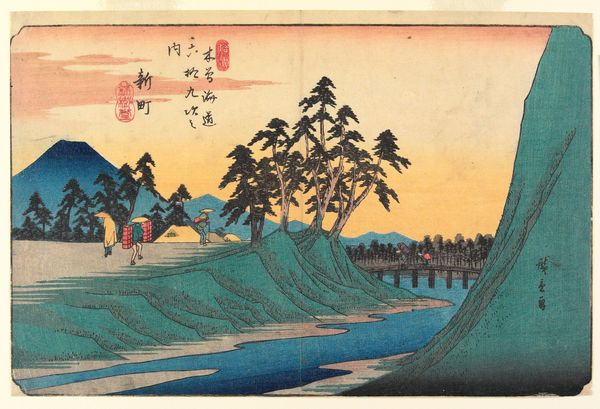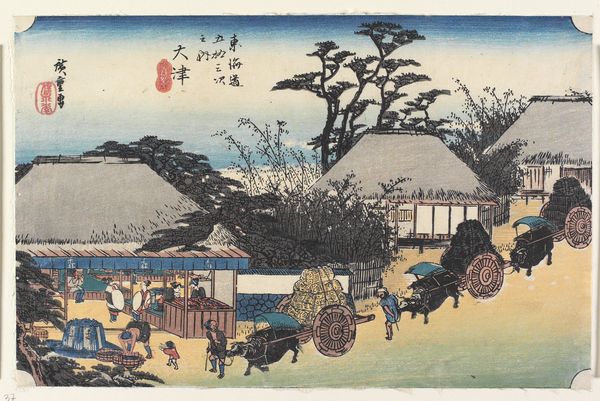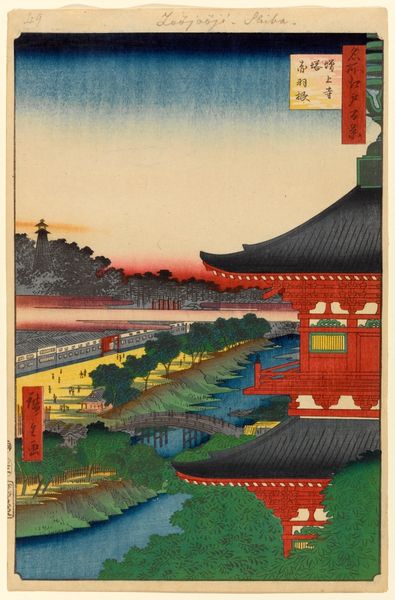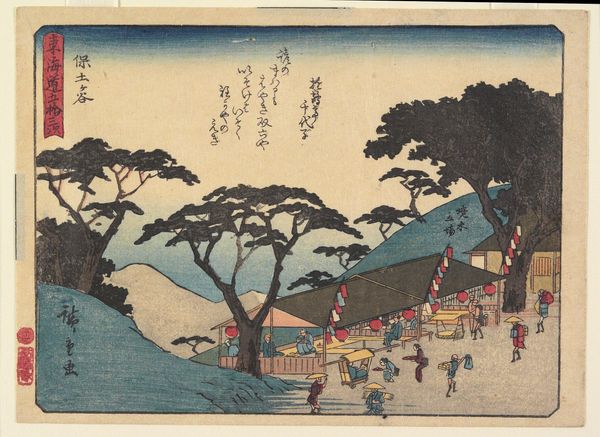
print, watercolor, ink
#
water colours
# print
#
landscape
#
ukiyo-e
#
japan
#
watercolor
#
ink
#
cityscape
Dimensions: 8 7/16 × 13 3/4 in. (21.5 × 35 cm) (image, horizontal ōban)
Copyright: Public Domain
Curator: What strikes me first is how muted the color palette is, despite the scene's potential vibrancy. Editor: I see it differently. There’s a subtle vibrancy here, evoking a specific social moment. This is Utagawa Hiroshige’s “Kiyomizu Temple,” a woodblock print created around 1834, and currently housed in the Minneapolis Institute of Art. Curator: The printmaking process itself would be fascinating to unpack. The layering of colors, the carving of the woodblocks – each decision impacts the final product, its consumption and value as well. The ukiyo-e tradition relies on skilled artisans. Editor: Precisely, and we need to consider ukiyo-e not simply as 'pictures of the floating world,' but as cultural documents. Kiyomizu Temple wasn't just a beautiful vista; it was a social space, a place where class and gender intersected. Note the figures in the foreground pavilion – the arrangement implies particular social dynamics, doesn't it? Curator: You're right, and thinking about access to materials—the inks, the paper—and the labor involved makes one reconsider the print as a commodity. Each stage in the process, from initial sketch to final distribution, shaped the art form itself. Editor: I'm also curious about the location – Kiyomizu Temple, perched on the hillside. Temples occupied a complicated role in Japanese society then, serving not only spiritual functions but also existing as centers of power, commerce, and pilgrimage. Hiroshige places it almost within reach, a sort of democratizing gesture. Curator: I see that. Looking closely, the layering of colours—the gradations in the sky—required a mastery of technique and materials. These effects suggest the material investments needed, shaping access to creating these kinds of scenes. The materiality directly influences our understanding and interpretation. Editor: True. Also note how he positions the temple within a panoramic sweep, blending the sacred with the mundane, all of it hinting at a specific set of societal expectations, tensions, and power structures operating beneath a picturesque exterior. What remains interesting to me is to study how prints were disseminated in the art market and sold to very different kinds of viewers. Curator: Exactly. Reflecting on that now, I’m considering this print through a new lens, really appreciating the physical process of creation and its links to social dynamics. Editor: Indeed, art can unveil the structures governing not just its making but also its reception and ongoing dialogues with our world.
Comments
No comments
Be the first to comment and join the conversation on the ultimate creative platform.
